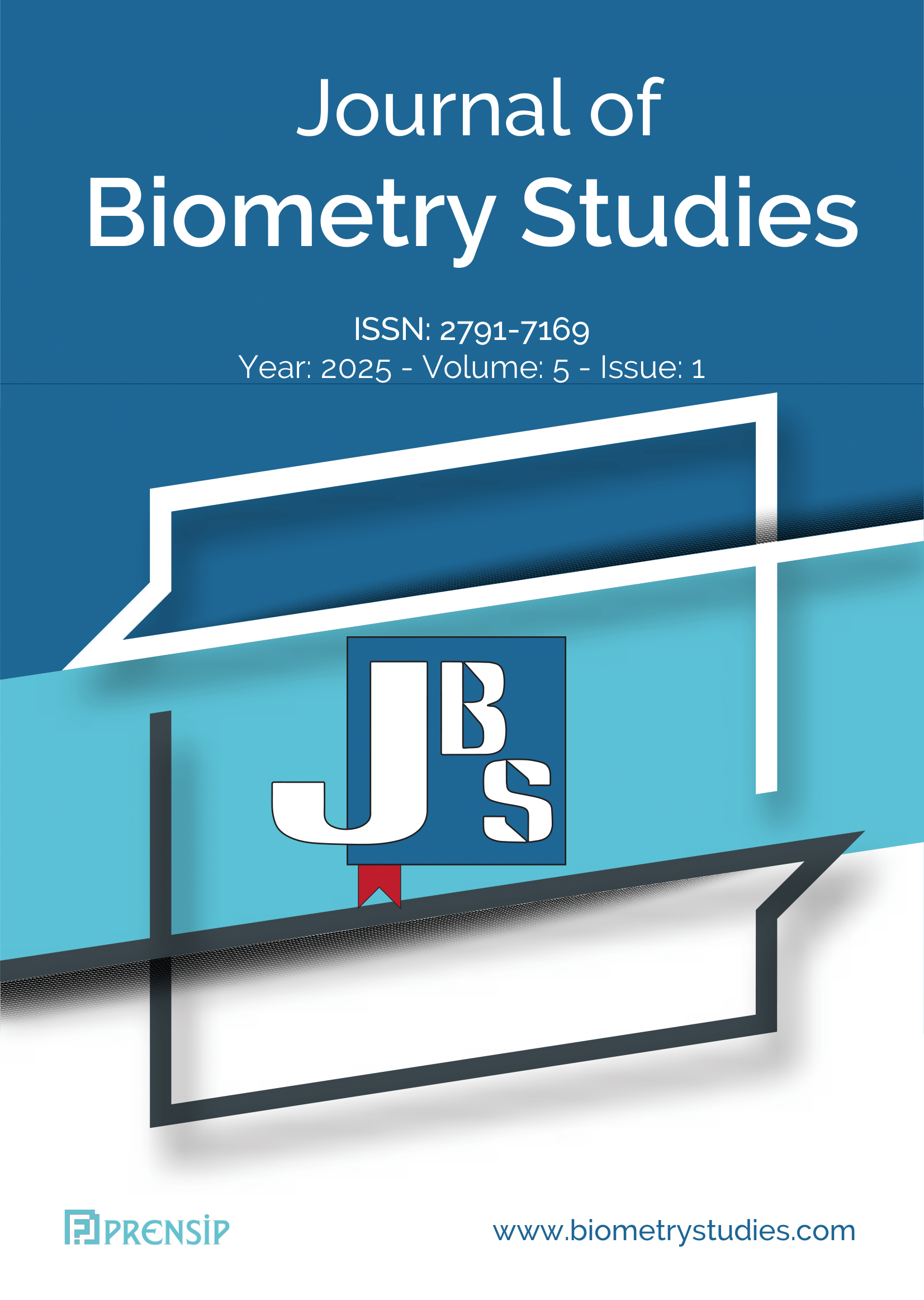Effects of zinc and copper oxide nanoparticles on sugar beet (Beta vulgaris L.)
DOI:
https://doi.org/10.61326/jofbs.v5i1.03Keywords:
Nanoparticle, Sugar beet, Copper, ZincAbstract
In recent years, the development of nanotechnology and the results of many researches in this field have shown that it contributes significantly to germination, growth, development and product yield of plants. In addition, nanoparticle applications have been shown to positively affect cell structure and cell function on physiological and biochemical mechanisms in the regulation of adverse effects caused by various environmental stresses. In this study, zinc oxide (ZnO) and copper oxide (CuO) nanoparticle were applied to the seeds of sugar beet (Bernache) variety and the effects of changes in germination, weight and length measurements in radicle and plumule were investigated. It was determined that the seeds responded differently to both nanoparticle. In our study, copper oxide pretreatment caused an increase in radicle and plumula length. In terms of weights, it was observed that copper oxide 1800 mg/l application caused a significant increase in shoot and root wet weight. As a result, it was determined that copper oxide 1800 mg/l pretreatment had a positive effect on all parameters examined.
References
Cakmak, I. (2000). Possible roles of zinc in protecting plant cells from damage by reactive oxygen species. New Phytologist, 146(2), 185-205. https://doi.org/10.1046/j.1469-8137.2000.00630.x
Dimkpa, C. O., & Bindraban, P. S. (2016). Fortification of micronutrients for efficient agronomic production: A review. Agronomy for Sustainable Development, 36(1), 7. https://doi.org/10.1007/s13593-015-0346-6
González-Melendi, P., Fernández-Pacheco, R., Coronado, M. J., Corredor, E., Testillano, P. S., Risueño, M. C., Marquina, C., Ibarra, M. R., Rubiales, D., & Pérez-de-Luque, A. (2008). Nanoparticles as smart treatment-delivery systems in plants: Assessment of different techniques of microscopy for their visualization in plant tissues. Annals of Botany, 101(1), 187-195. https://doi.org/10.1093/aob/mcm283
Jini, D., & Joseph, B. (2017). Physiological mechanism of salicylic acid for alleviation of salt stress in rice. Rice Science, 24(2), 97-108. https://doi.org/10.1016/j.rsci.2016.07.007
Kaveh, R., Li, Y. S., Ranjbar, S., Tehrani, R., Brueck, C. L., & Van Aken, B. (2013). Changes in Arabidopsis thaliana gene expression in response to silver nanoparticles and silver ions. Environmental Science & Technology, 47(18), 10637-10644. https://doi.org/10.1021/es402209w
Kunjam, M., Govada, H., Mididoddi, N., & Kota, R. S. L. N. (2015). Studies on selected heavy metals on seed germination and plant growth in pea plant (Pisum sativum) grown in solid medium. Journal of Pharmacognosy and Phytochemistry, 3(5), 85-87.
Lalarukh, I., Zahra, N., Al Huqail, A. A., Amjad, S. F., Al-Dhumri, S. A., Ghoneim, A. M., ... & Abdelhafez, A. A. (2022). Exogenously applied ZnO nanoparticles induced salt tolerance in potentially high yielding modern wheat (Triticum aestivum L.) cultivars. Environmental Technology & Innovation, 27, 102799. https://doi.org/10.1016/j.eti.2022.102799
Mahajan, P., & Kaushal, J. (2018). Role of nanofertilisers agricultural farming: A review. International Journal of Current Microbiology and Applied Sciences, 7(2), 3155-3162.
Rizwan, M., Ali, S., Qayyum, M. F., Ok, Y. S., Adrees, M., Ibrahim, M., Zia-ur-Rehman, M., Farid, M., & Abbas, F. (2017). Effect of metal and metal oxide nanoparticles on growth and physiology of globally important food crops: A critical review. Journal of Hazardous Materials, 322, 2-16. https://doi.org/10.1016/j.jhazmat.2016.05.061
Sarkar, A. K., Kalita, D., Das, T. M., Sarmah, D., Leifer, K., & Baruah, S. (2023). Nanotechnology for pesticide sensing. In B. Sarkar, & A. Sonawane (Eds.), Biological Applications of Nanoparticles (pp. 177-200). Springer. https://doi.org/10.1007/978-981-99-3629-8_11
Ulhassan, Z., Yang, S., He, D., Khan, A. R., Salam, A., Azhar, W., Muhammad, S., Ali, S., Hamid, Y., Khan, I., Sheteiwy, M. S., & Zhou, W. (2023). Seed priming with nano-silica effectively ameliorates chromium toxicity in Brassica napus. Journal of Hazardous Materials, 458, 131906. https://doi.org/10.1016/j.jhazmat.2023.131906
Vazirimehr, M. R., & Rigi, K. (2014). Effect of salicylic acid in agriculture. International Journal of Plant Animal, Environmental Sciences, 4(2), 291-296.
Zhao, X., Chen, Y., Li, H., & Lu, J. (2021). Influence of seed coating with copper, iron and zinc nanoparticles on growth and yield of tomato. IET Nanobiotechnology, 15(8), 674-679. https://doi.org/10.1049/nbt2.12064
Downloads
Published
Issue
Section
License
Copyright (c) 2025 Fırat SEFAOĞLU, Gamze Betül ÜNAL, Dilara KAYNAR

This work is licensed under a Creative Commons Attribution 4.0 International License.





